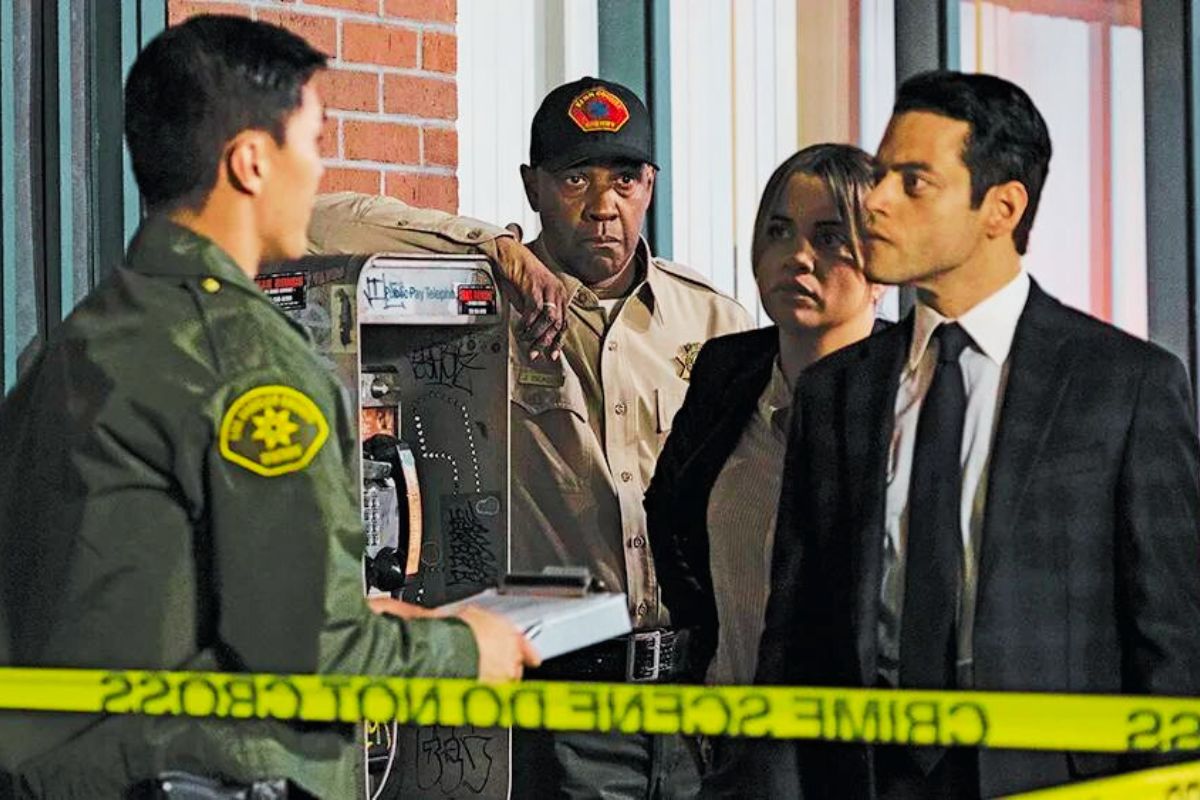In Denzel Washington’s latest cinematic endeavor, The Little Things, a recurring phrase echoes throughout the narrative: “It’s the little things that get you caught.” This cryptic warning gains chilling significance as the movie draws to its unexpected conclusion.
Written and directed by John Lee Hancock, this crime drama casts Washington as veteran cop Joe “Deke” Deacon, Rami Malek as the newer detective Jim Baxter, and Jared Leto as their prime suspect, Albert Sparma.
A Character-Driven Crime Drama
The Little Things deviates from typical crime thrillers, placing greater emphasis on character exploration than on action or the crimes themselves. The ending of the movie is a dense tapestry that warrants careful unraveling.
The Final Moments
As the story reaches its climax, Sparma manages to persuade Baxter to join him in a remote desert location, promising to lead him to the body of Rhonda Rathbun. The tension escalates as Sparma continues to taunt Baxter, eventually bringing up the detective’s family. In a fit of rage, Baxter strikes Sparma with a shovel, killing him.
Simultaneously, Deacon locates Baxter and Sparma. He stumbles upon Sparma’s lifeless body and is plagued by a flashback to a grim incident from over five years ago, where he was searching for a missing girl. An accidental shooting leaves the audience in suspense, wondering about the true nature of that event.
In the present, as Baxter grapples with the aftermath of Sparma’s death, Deacon enters cover-up mode, instructing Baxter to bury the body. He disposes of Sparma’s belongings and gives his car to a stranger on the street. Deacon warns Baxter not to delve into the past, cautioning that the little things will expose their actions.
The Elusive Resolution
Deacon attempts to provide Baxter with a semblance of resolution by sending him a red barrette, supposedly belonging to Rathbun. This gesture is meant to prove Sparma’s guilt, at least in Rathbun’s case. However, the audience learns that Deacon purchased the barrette and did not discover it at Sparma’s residence. This revelation leaves viewers in suspense, uncertain about the identity of the real killer and Sparma’s guilt.
With the FBI taking over the case, there is potential for the actual perpetrator to be exposed. Baxter’s momentary relief may become an unrelenting torment if it is revealed that he killed an innocent man. The Little Things refuses to provide a definitive answer regarding Sparma’s innocence or guilt, inviting viewers to draw their own conclusions.
Analyzing Sparma’s Guilt
Sparma’s ambiguous character adds layers of complexity to the narrative. His repeated assertion, “the truth is I didn’t kill anyone,” and his eerie fascination with murder cases raise questions about his involvement. While there is limited concrete evidence to support Sparma as the killer, his unsettling behavior keeps the detectives and the audience on edge.
Hancock’s direction gives the audience the freedom to interpret the evidence in different ways. Some may align with Baxter’s conviction that Sparma is the killer, while others may see a lack of substantial proof, leaving room for doubt.

A Break from Detective Story Conventions
The Little Things reimagines the traditional procedural detective story. It teases the audience with a familiar police procedural and crime thriller atmosphere while veering away from typical conventions. John Lee Hancock’s intention was to break free from the formulaic structure of crime dramas that often climax in predictable confrontations between the hero and the villain.
Hancock’s aspiration was to create a more nuanced, non-formulaic ending that would be equally satisfying. In doing so, The Little Things disrupts the established pattern where good triumphs over evil and leaves the audience with a disquieting uncertainty.
Mentorship Turned Nightmare
The relationship between Deacon and Baxter defies expectations. While many crime dramas portray rookie and veteran cops initially clashing but eventually working in harmony, The Little Things takes a different path. Baxter’s initial desire to prove himself quickly gives way to Deacon mentoring him.
However, their deepening bond becomes a double-edged sword, as their shared obsession consumes them. The influence Deacon exerts over Baxter results in a transformation that reflects the mentor-student dynamic turning into a sinister mirror image.
Obsession and Ambiguity as True Villains
In The Little Things, the true villains are not individual characters but their obsessions and the pervasive ambiguity. Obsession, whether it is Deacon’s haunting past, Baxter’s pursuit of heroism, or Sparma’s fixation on criminal psychology, ultimately leads to their undoing.
Ambiguity, too, plays a malevolent role. The relentless quest for truth and answers becomes a source of torment, both in the movie and in real life. The Little Things illustrates how an insatiable need for answers can disrupt lives and lead to unforeseen consequences.
As the credits roll on The Little Things, it is not a clear-cut resolution that leaves an indelible mark. Instead, it challenges conventional storytelling, keeping the audience in a state of perpetual wonder and contemplation. In a world where the little things often go unnoticed, this film reminds us that they can be the most powerful disruptors of all.

